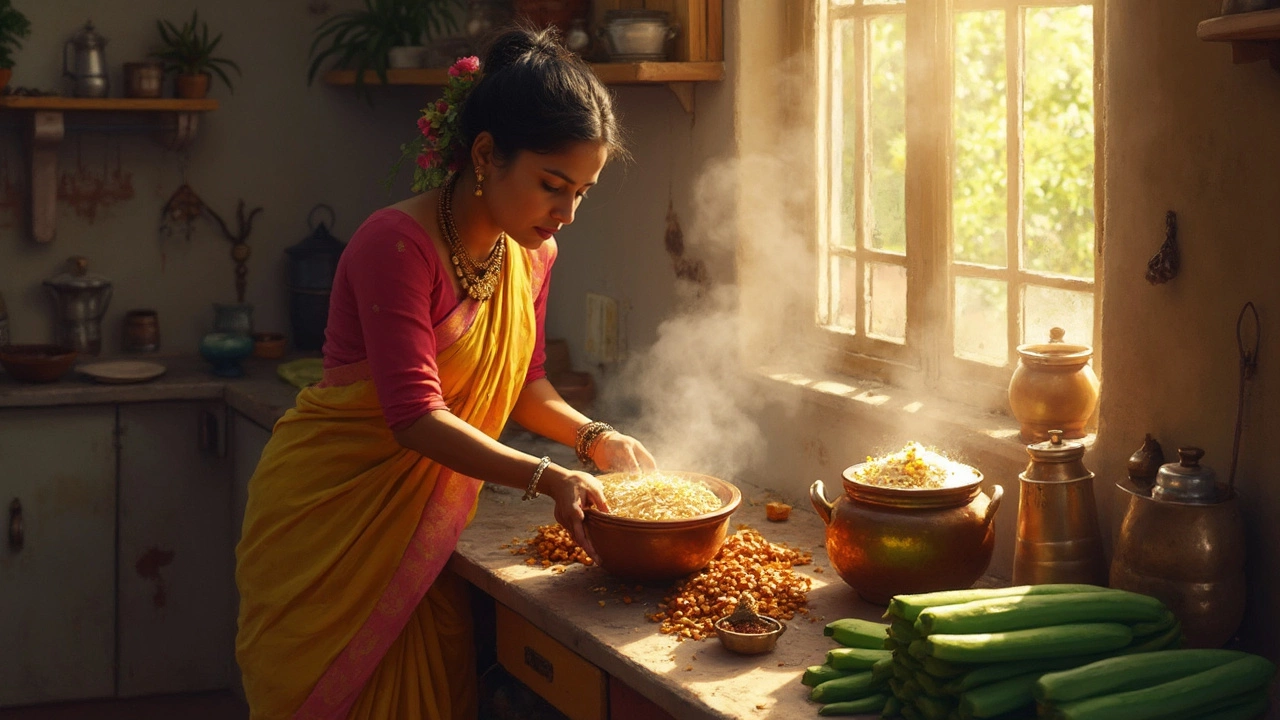Idli Tips: Perfect Fluffy Steamed Rice Cakes Every Time
When working with Idli, a traditional South Indian steamed cake made from fermented rice and urad dal. Also known as steamed rice cake, it serves as a staple breakfast and snack across India. Getting that cloud‑like texture isn’t magic—it's all about three core factors: fermentation, batter consistency, and steaming method. Each factor connects to a larger family of fermented foods, so mastering them not only improves idli but also boosts your confidence with dosa batter, uttapam and even sourdough‑style breads.
Fermentation, the natural process where microbes break down starches into carbon dioxide and acids creates the airy pockets that lift the idli. A warm environment (around 30‑35 °C) for 8‑12 hours lets the mix develop the right acidity, which in turn improves both flavor and fluffiness. Many home cooks keep a small starter from a previous batch; this “old‑man” batter jumps the clock by 3‑4 hours. If you’re short on time, a teaspoon of lemon juice or a pinch of baking soda can give the microbes a boost, but use them sparingly to avoid sour off‑notes. idli tips always remind you to give the batter a gentle stir before steaming – over‑mixing can break down the delicate gas bubbles formed during fermentation.
Rice‑Lentil Ratio, the proportion of soaked rice to urad dal in the batter is the backbone of a good idli. Most experts stick to a 3:1 or 4:1 ratio, but tweaking it by a little extra rice can yield a firmer bite, while more dal makes the crumb softer. The key is to grind the dal to a smooth paste and the rice to a slightly coarse texture, then blend them evenly. Soaking the rice and dal for at least 4 hours ensures even grinding; a grain‑size grinder or a high‑speed blender works best. After grinding, add water gradually – the batter should be pour‑able but not runny, roughly the consistency of a thick pancake batter. Too much water dilutes the natural acids, slowing fermentation; too little water leaves the batter dense and prevents steam from moving through the interior.
Steaming Technique, the method of cooking idli batter in a sealed environment with steam decides whether the final cakes stay moist or turn dry. Use a thick‑bottom steamer or a pressure‑cooker without the weight, pre‑heat the water until it’s humming, then arrange the idli molds without crowding. Fill each mold just up to the rim – over‑filling forces the batter to burst, while under‑filling gives a stubby result. Cover the lid tightly and avoid opening it in the first 5 minutes; each peek releases steam and can cause the idlis to sink in the middle. After 10‑12 minutes of steady steam, a quick skewer test (it should come out clean) confirms doneness. Let the idlis sit a minute before removing; this helps the steam settle and prevents them from breaking apart.
What Dosa Batter Can Teach You About Idli
The batter used for dosas shares the same fermentation principles as idli, but the end goals differ – dosa seeks a crispy edge while idli aims for a soft, airy crumb. Because both rely on the rice‑dal blend, any tip that improves dosa texture automatically benefits idli. For example, adding a handful of cooked rice or a splash of fenugreek seeds to the mix boosts fermentable sugars, leading to a more vigorous rise. Similarly, a short “pre‑ferment” of just the rice portion (grind, rest 30 minutes, then mix with dal) can speed up the overall process, a trick seasoned cooks use when they need idlis ready in under six hours. Understanding these cross‑overs expands your kitchen toolbox and lets you experiment confidently with other fermented staples like appam or neer dosa.
With these fundamentals in place, you’ll find that making fluffy idlis becomes as routine as boiling water. Below you’ll discover a curated set of articles covering quick fixes for flat batter, shortcuts for instant fermentation, oil choices for crisp dosas, and even how to repurpose leftover idli batter into tasty snacks. Dive in, try a few tricks, and watch your breakfast transform into a light, nutritious delight.
How Many Hours to Soak Rice and Urad Dal for Idli Batter
Getting the soaking time right for rice and urad dal is the secret to fluffy idlis. This guide breaks down exactly how long to soak each ingredient and why it matters. You'll learn some smart tricks for fermenting your batter and how temperature can mess with the process. I've included tips for tweaking the soaking time if you're short on time or dealing with chilly weather. Your idlis are about to get a makeover—soft, spongy, and full of character.
Read more